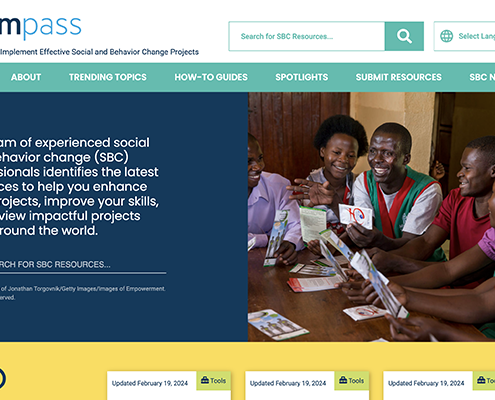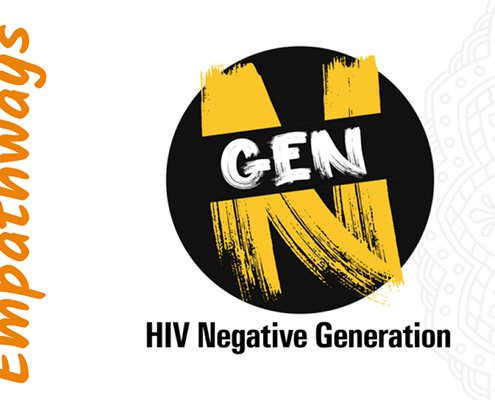
The Compass
Breakthrough ACTION English, French Website Digital Breakthrough ACTIONThis page introduces the Compass, a repository of high-quality social and behavior change resources including “how-to” guides and campaign materials.

The Role of SBC on the Increase in Tuberculosis Case Notification in Nigeria
Breakthrough ACTION English Nigeria Tuberculosis Case Study Breakthrough ACTIONThis case study shows how an innovative social and behavior change campaign in Nigeria increased tuberculosis case notification by 50%.
 USAID/Breakthrough ACTION
USAID/Breakthrough ACTIONAdapting Social and Behavior Change Programming for Maternal, Newborn, and Child Health in Nigeria During COVID-19
Breakthrough ACTION English Nigeria COVID-19, Maternal and Child Health Case Study Breakthrough ACTIONThis case study describes how Breakthrough ACTION worked with partners to adapt maternal, newborn, and child health programming to overcome COVID-19 challenges.

Reproductive Health Innovation Exchange
Breakthrough ACTION English, French Sexual and Reproductive Health, HIV, Maternal and Child Health, Provider Behavior Change, Youth Fact Sheet/Brief, Video/Animation Behavioral Science Breakthrough ACTIONThis page features factsheets and videos about 16 innovative applications of social and behavior change approaches for family planning and reproductive health.

Breakthrough ACTION Liberia Newsletter
Breakthrough ACTION English Liberia Sexual and Reproductive Health, Malaria, Maternal and Child Health, WASH, Youth Newsletter Integration Breakthrough ACTIONThis page contains newsletters prepared by Breakthrough ACTION-Liberia to update stakeholders on activities in a variety of health areas.
 Jonathan Torgovnik/Getty Images/Images of Empowerment
Jonathan Torgovnik/Getty Images/Images of EmpowermentProvider Behavior Change Toolkit for Family Planning
Breakthrough ACTION English, French Sexual and Reproductive Health, Provider Behavior Change, Service Delivery Case Study, Toolkit Social and Behavior Change Communication, Social and Structural Breakthrough ACTIONThis toolkit helps users identify, understand, and prioritize factors influencing provider behavior change (PBC) so they can design supportive PBC initiatives.

Empathways Adaptations
Breakthrough ACTION English, French Francophone West Africa, Burkina Faso, Côte d’Ivoire, Niger, Togo, Indonesia, Nepal Sexual and Reproductive Health, HIV, Provider Behavior Change, Service Delivery, Youth Tool, Website Breakthrough ACTIONThis page contains information about adapting Empathways, a card activity, for use in a variety of health areas to build provider-client trust.

COVID Behavior Dashboard Reports
Breakthrough ACTION English Bangladesh, Burma, Democratic Republic of the Congo, Ethiopia, Burkina Faso, Côte d’Ivoire, Ghana, Guinea, India, Indonesia, Kenya, Mozambique, Nigeria, Nepal, South Africa, Philippines, Senegal, Mali, Guatemala, Honduras, Pakistan, Vietnam COVID-19 Report Breakthrough ACTIONThis page contains links to monthly reports from January to August 2022 on the results of the COVID-19 Trends and Impact Survey for 21 countries.
 Dominic Chavez/World Bank
Dominic Chavez/World BankEngaging Men as Contraceptive Users: Materials for Vasectomy Advocates
Breakthrough ACTION English Sexual and Reproductive Health, Gender, Male Engagement, Service Delivery Interactive, Tool, Website Advocacy, Social and Behavior Change Communication, Social and Structural Breakthrough ACTIONBreakthrough ACTION’s package of evidence-based resources can help family planning program planners advocate for the inclusion of vasectomy.

